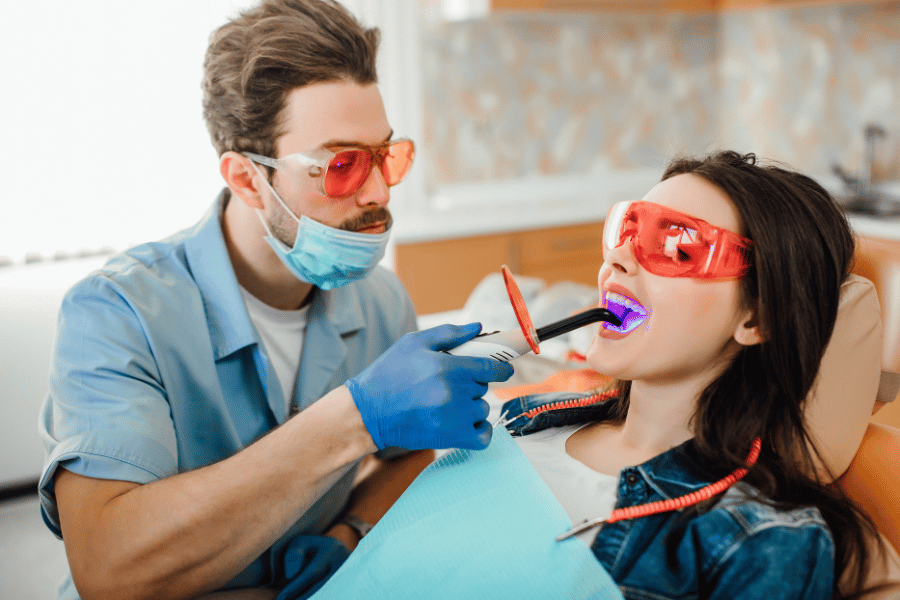To understand teeth whitening, one must first understand the causes of teeth discoloration. Various factors contribute to dull or yellowed teeth, ranging from the food and drink we consume, tobacco use, aging, and even certain medications. At the microscopic level, stains can either be extrinsic (on the surface) or intrinsic (deep within the tooth).
Most teeth whitening products contain either hydrogen peroxide or carbamide peroxide. These powerful agents work by breaking stains into smaller pieces, reducing their concentration and making your teeth appear brighter, as explained in this NCBI article.
In-office teeth whitening treatments utilize a high-concentration peroxide gel that delivers quick and dramatic results. This professional procedure often includes the use of a special light or laser to accelerate the whitening process, according to the Consumer Guide to Dentistry.
On the other hand, at-home whitening products typically use a lower concentration peroxide gel. These kits often involve a mouthpiece tray filled with the whitening solution and are generally slower to show results compared to professional treatments, as described by Healthline.
There’s an abundance of natural teeth whitening methods being promoted, such as using activated charcoal, baking soda, or apple cider vinegar. While they may have some effectiveness in removing surface stains, they are unlikely to alter the intrinsic color of your teeth, according to the American Dental Association.

